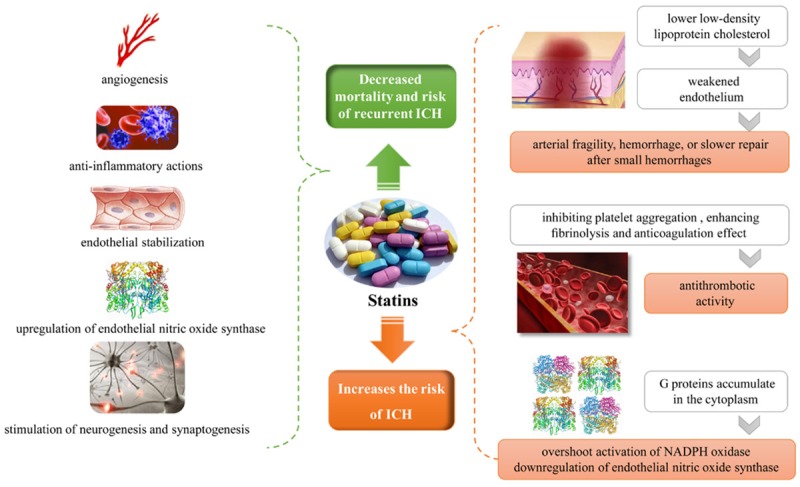Figure 6.

Pleiotropic effects of statin therapy. Statin therapy is beneficial in the treatment of intracerebral hemorrhage (ICH) due to endothelial stabilization, anti-inflammatory effects, upregulation of endothelial nitric oxide synthase, and stimulation of neurogenesis and synaptogenesis [47-49]. The mechanism of statin therapy associated with increased ICH may be due to lower cholesterol levels in a weakened endothelium, which subsequently leads to arterial fragility, hemorrhage, or slower repair after small hemorrhages [57]. Statins may have mild antithrombotic activity and reduce thrombosis by inhibiting platelet aggregation, enhancing fibrinolysis, and affecting anticoagulation [56,63,64]. Statin therapy also promotes the accumulation of small G proteins, and activation of small G proteins leads to activation of NADPH oxidase or downregulation of endothelial nitric oxide synthase [65,66].
